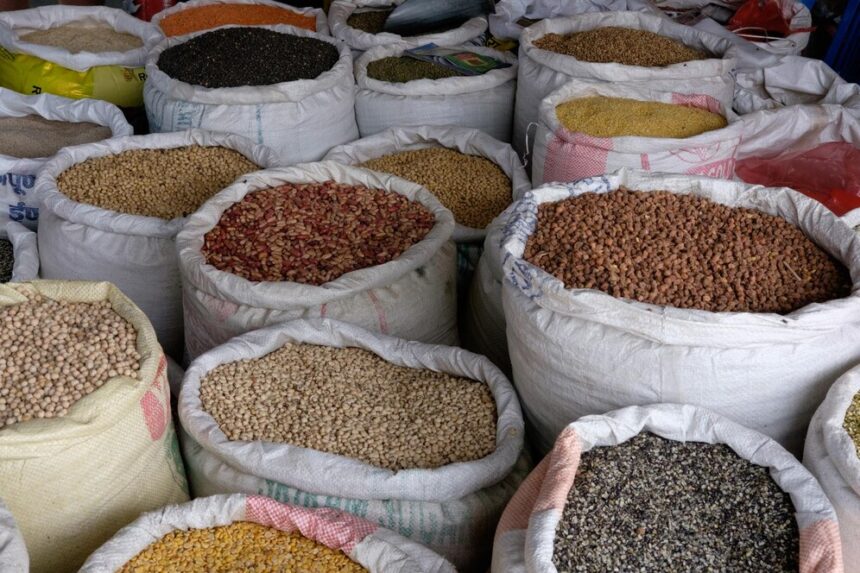Grain legumes such as beans, lentils, chickpeas, cowpeas, and pigeon peas are essential sources of protein, income, and soil fertility for millions of farmers worldwide. However, post-harvest losses due to poor storage practices can significantly reduce the profitability and quality of these crops. Insects, moisture, mold, and rodents are the main threats to stored legumes, especially in tropical and subtropical climates.
To ensure grain legumes maintain their nutritional value, germination ability (if used as seed), and market value, proper storage is crucial. This guide explores the most effective storage methods for grain legumes, particularly for smallholder farmers, commercial growers, and cooperatives looking to reduce losses and extend shelf life.
1. Drying Before Storage
Proper drying is the first and most critical step before storage. Grain legumes must be dried to a safe moisture content to prevent mold growth and insect infestation.
- Recommended moisture content for safe storage is 10–12%.
- Sun-drying on clean tarpaulins or raised platforms is a common method.
- Avoid drying directly on soil to prevent contamination and moisture absorption.
- Use moisture meters where available to ensure precise drying.
If grain is stored with moisture above safe levels, it may lead to fungal growth, discolouration, and aflatoxin contamination, which can render the grain unsafe for consumption or sale.
2. Use of Airtight Containers
Airtight or hermetic storage is one of the most effective methods for protecting grain legumes from pests without the use of chemicals.
- Hermetic bags, such as PICS (Purdue Improved Crop Storage) or SuperGrain bags, are multilayered and prevent air exchange.
- These containers create an oxygen-poor environment that kills insects and prevents infestation.
- Suitable for both small-scale farmers and commercial operations.
- Containers such as plastic drums or sealed metallic bins can also be used effectively.
Airtight storage eliminates the need for insecticide powders, making it a safer and more environmentally friendly option.
3. Cool and Dry Storage Environment
Grain legumes should be stored in a cool, dry, and well-ventilated location to maintain quality over time.
- Temperature should ideally remain below 25°C to limit insect activity.
- The storage area must be protected from rain and high humidity.
- Avoid placing grain bags directly on the floor; use wooden pallets or platforms to promote airflow and prevent moisture absorption from the ground.
- Maintain at least 30 cm space between stacks and walls for ventilation and inspection access.
4. Use of Natural or Chemical Pest Control
If airtight containers are not available, farmers can use safe insect control methods to protect legumes from weevils, beetles, and moths.
- Natural methods include mixing dried neem leaves, ash, or diatomaceous earth with the grains to repel or kill pests.
- Chemical methods may include using grain protectants like Actellic Super Dust or aluminum phosphide tablets, but these must be applied according to guidelines and only by trained personnel.
- Always store treated grain separately from food-grade or seed legumes to prevent contamination.
Regular inspection of stored legumes is necessary to detect early signs of pest activity and take action before severe damage occurs.
5. Metal Silos and Storage Bins
For medium to large-scale storage, especially in cooperatives or commercial farms, metal silos offer durable, long-term protection for grain legumes.
- Silos can be customized for volume, typically holding from 500 kg to several tonnes.
- They offer protection against rodents, insects, and moisture when properly sealed.
- Metal bins should be painted or placed in shaded areas to avoid excessive heat build-up.
- They are often used in conjunction with aeration systems for temperature control.
Although metal silos have a higher initial cost, they are a good investment for farmers producing large volumes or storing grain for longer periods.
6. Seed Storage Considerations
When storing grain legumes for planting in the next season, special care must be taken to preserve seed viability.
- Seeds should be dried to about 8–10% moisture content.
- Use breathable cloth or paper bags to allow air circulation.
- Avoid using plastic containers for seeds unless they are hermetically sealed and stored in low-humidity environments.
- Label seed bags with variety names and harvest dates for easier inventory management.
Rotating seed stock every season and conducting germination tests before planting helps ensure good crop establishment.
7. Storage Hygiene and Maintenance
Maintaining a clean storage environment is essential for long-term success.
- Clean storage rooms before bringing in new harvests.
- Remove all old grain residues and spilled material, which can harbor pests.
- Seal cracks and holes in storage structures to block rodent entry.
- Monitor humidity and temperature regularly using affordable tools like hygrometers and thermometers.
Implementing regular inspections every two weeks during the storage period can help prevent minor problems from becoming major losses.
Effective storage of grain legumes begins with proper drying and ends with using the right storage technology based on your scale and budget. For smallholders, options like hermetic bags and natural pest repellents are affordable and highly effective. For larger operations, metal silos and controlled environments offer long-term solutions to protect valuable harvests.
By investing in proper post-harvest storage methods, farmers can significantly reduce losses, maintain the nutritional and market value of their legumes, and increase profits year after year.








